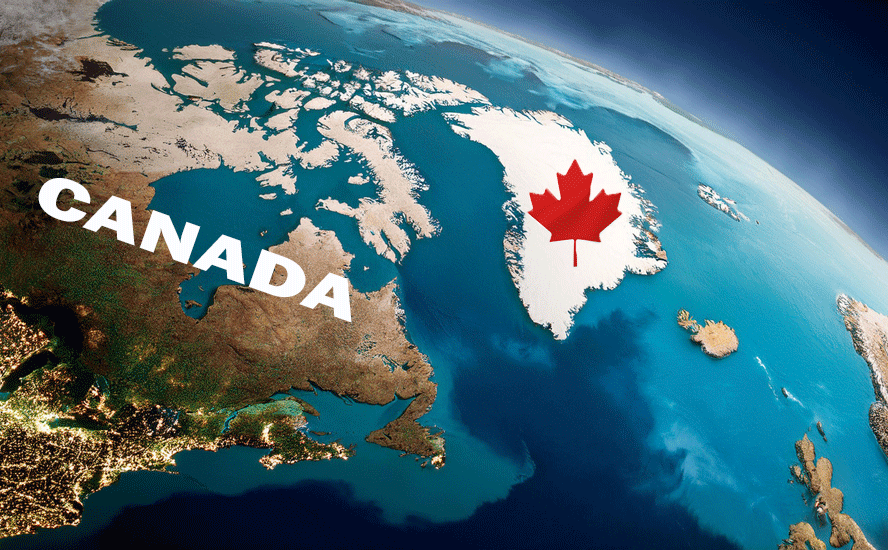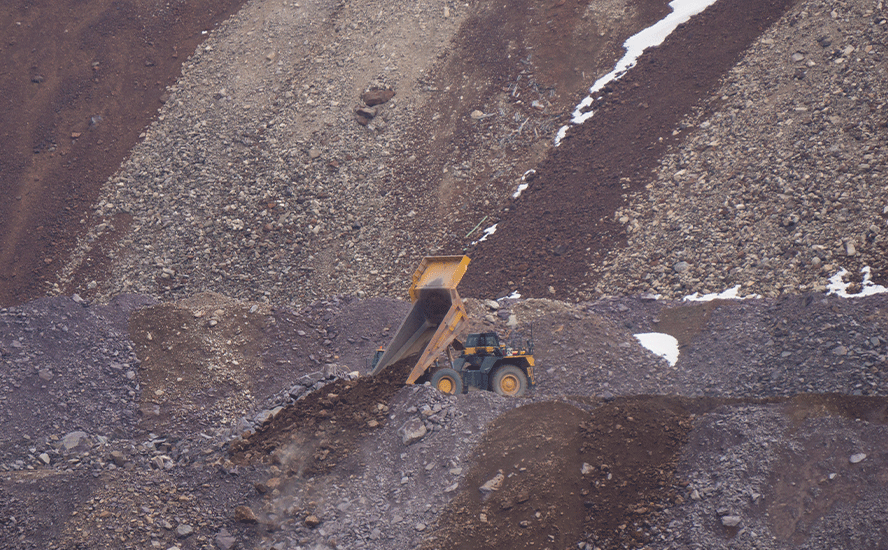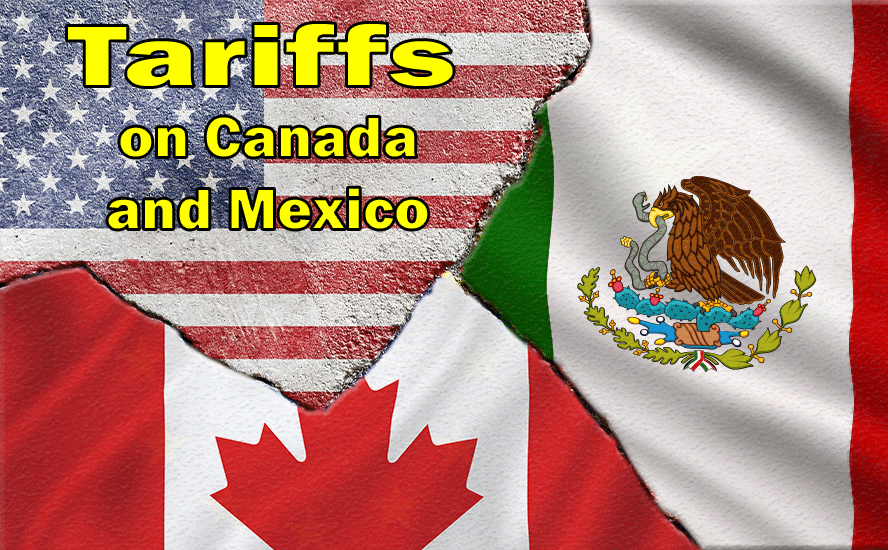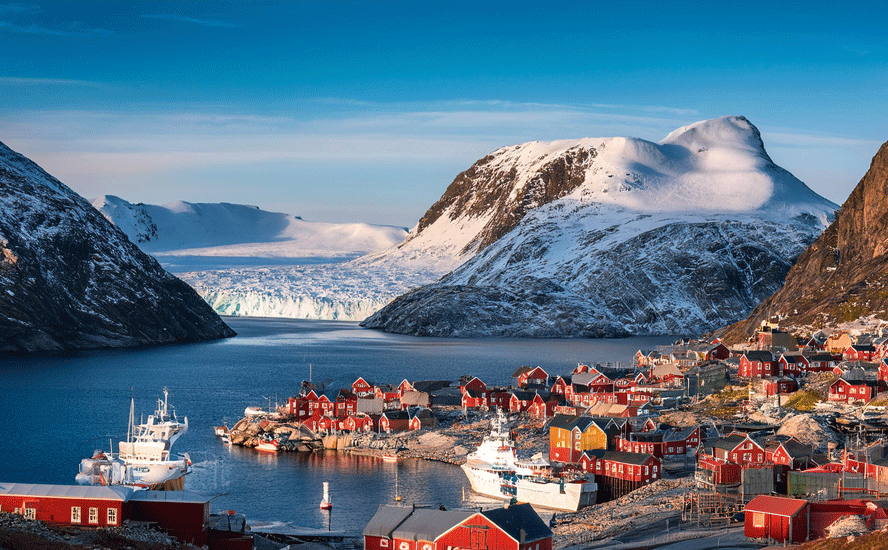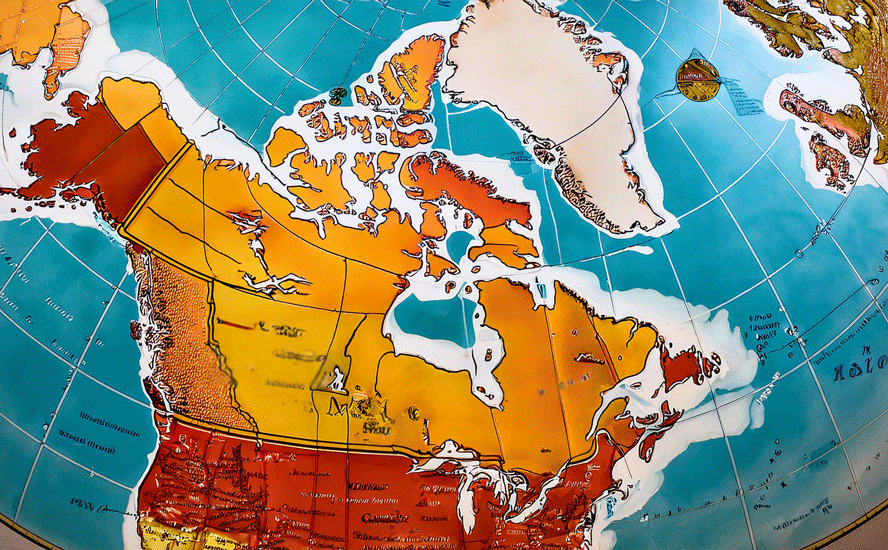A growing global dystopia – Richard Mills
2022.10.05
A new research paper by the International Monetary Fund estimates that the 48 countries most exposed to food shortages, face a combined increase of $9 billion in their import bills due to the sudden jump in food and fertilizer prices caused by the war in Ukraine. Disruptions to grain and fertilizer flows have prompted the worst food security crisis since the financial crisis of 2007-08, with 345 million people now facing life-threatening shortages, the IMF said on Sept. 30.
Sudan, Kyrgyzstan, Belarus, Armenia and Georgia were identified as the most dependent on Ukrainian and Russian food imports as a percentage of their GDP.
The connection between high energy and food prices
Crisis of unaffordability
Higher food, energy and rents tie into a growing crisis of affordability. Inflation in the United States is at levels last seen in 1982, and it’s not much better in Canada. (8.3% in the US, up to Aug. 31, 7.1% in Canada)
US rents rose 0.7% in August, the fastest monthly pace since January, 1991. Annual rent inflation is at 6.7%, also the highest in nearly 40 years. And it’s expected to get worse.
“Rent prices look to accelerate in the near term as rental demand remains exceptionally high from ongoing job additions and higher mortgage rates forcing people out of the home buying market,” said National Association of Realtors Chief Economist Lawrence Yun, in USA Today.
For the most part, wages haven’t kept up. As inflation eats away disposable income, nearly two-thirds of Americans (64%) are living paycheck to paycheck.
The Wall Street Journal says the demand for workers outstripping supply, combined with “inflation psychology” making employees push for better wages in anticipation of higher inflation, threaten to ignite an inflationary spiral, where workers face higher prices and demand more pay, leading businesses to continue raising prices.
The US Federal Reserve in September raised interest rates for the fifth time this year, to between 3 and 3.25%, the highest since 2008. The rate hikes are expected to cool demand for goods and services which has driven inflation to a 40-year high. We remain skeptical.
Higher US Treasury yields are throttling the US economy and growth has slowed. The Conference Board forecasts real GDP growth will come in at 1.4%, year over year, and that 2023 growth will fizzle to 0.3%.
Jerome Powell and his Federal Open Market Committee (FOMC) are focused on bringing down inflation, no matter what the cost. Many FOMC members say they expect the federal funds rate to hit 4.2% this year and 4.5% in 2023. They think that economic conditions will remain rosy, with GDP above 0% and unemployment keeping to 5%.
This is despite two quarters in a row of shrinking GDP — the classic definition of a recession — an inverted yield curve, and falling home prices due to dramatic rises in mortgage rates. Powell, the Fed chair, has said that ending the current bout of inflation will require pain in the form of job losses, and he has strongly implied that ending inflation could take years.
All of the above is starting to take its toll on rich-world consumers. In the United States, this group’s spending makes up nearly 70% of the economy.
The Economist recently reported that people are more downbeat than during the Great Recession of 2007-09 or the lockdowns of early 2020.
“The obvious explanation,” the esteemed publication writes, “is a once-in-a-generation surge in inflation,” noting that prices across the OECD club of countries are rising about 10% a year.
Yet high inflation is not a sufficient explanation for the gloominess. With American consumer confidence around a third lower than would be expected, given the rate of inflation, The Economist offered three explanations:
- The first is to do with expectations. In 2020 many pundits speculated that, once covid-19 was beaten, the world would enter the “roaring twenties”. So far, that hasn’t happened. Productivity growth remains low; no one owns a flying car. How could you not be disappointed?
- The second relates to the comedown from the stimulus bonanza. In 2020-21 rich-world governments doled out trillions of dollars to households, boosting disposable incomes by an unusually large amount. This year governments have largely stopped the handouts. Average disposable incomes are now falling, even without accounting for inflation. Nobody likes that.
- The third relates to the stimulus bonanza itself. A new working paper by Ania Jaroszewicz of Harvard University, and colleagues, finds tentative evidence that people who get modest cash payments of up to $2,000—the sort of amounts given out during the pandemic—actually become unhappier. These payments are not big enough to be life-changing, and may simply highlight what recipients are unable to afford. The fiscal response to covid, it seems, has a sting in its tail.

The picture isn’t any rosier north of the border.
Canadian consumer confidence has reportedly dropped to near record lows amid growing concerns about the global economy. Half of Canadians polled for a weekly measure of sentiment, the Bloomberg Nanos Canadian Confidence Index, expect the economy will weaken over the next few months, with only 14% anticipating a stronger economy.
The index declined for a fifth straight week, to touch some of the weakest levels outside the last two economic crises, Bloomberg said, adding:
The slide has almost fully erased a mini-rebound in sentiment in August and suggests households are buckling under the weight of rising consumer prices, higher borrowing costs, a housing correction, plunging stock markets and growing talk of recession.
The souring mood casts doubt on whether Canadian consumer spending can continue to drive the nation’s economic expansion.
Inequality
Consumer confidence, of course, is also a function of income. Those with higher take-home pay spend more, even when times are tough. Low-income households are more affected by the prices of essential goods like food, gasoline and heating fuel. When these go up, many are forced to cut back somewhere else, and/or charge basic necessities to credit cards, at obscene rates of interest.
A new Credit Suisse report finds nearly half of global household wealth (47%) is in the hands of just 1.2% of the world’s population. The infographic below shows these 62.5 million individuals control a staggering $221.7 trillion.
At the bottom of the pyramid, 2.8 billion people, or 53.2% of the world’s population, share a combined wealth of $5 trillion, an amount representing only 1.1% of the global wealth total.
How’s that for the rich getting richer?…

Also consider: the average US household is indebted to the tune of $150,000, and each person owes $99,000.
Liabilities for the bottom 90% of households jumped $300 billion over the past year, Bloomberg reported, which is the largest annual gain on record. Consumer debt including credit cards rose to an all-time high.
In contrast, debt levels for the top 10% were virtually unchanged.
According to Federal Reserve data, consumer liabilities for the bottom 90% increased $4.22 trillion in the second quarter, and as Bloomberg notes, as the central bank continues to push interest rates higher, it will mean higher debt-servicing costs for consumers.
Credit card interest rates have risen above 20% for those with good or fair credit, says WalletHub, an online personal finance data firm.
In 2018 the three highest-paid chief executives in the United States earned more than the output of several countries. Contrast this to the average Johnny Paycheck.
A December 2021 World Economic Forum report found the pandemic has exacerbated existing inequalities. Among its conclusions, the report says:
- The richest 10% of the global population currently take home 52% of the income. The poorest half earn just 8%.
- On average, an individual from the top 10% will earn $122,100, but an individual from the bottom half will earn just $3,920.
- The poorest half of the global population owns just 2% of global wealth, while the richest 10% own 76%.
- Over the last two decades, the average income gap between the top 10% and bottom 50% of individuals within countries has almost doubled.
- 2020 marked the steepest increase in the global billionaires’ share of wealth on record.
As regular people were laid off or had their hours cut, due to government-mandated business closures, or capacity limits, some of North America’s largest companies were taking advantage of generous government covid benefits. And as the stock market soared due to low interest rates and massive government stimulus, throughout the pandemic, a lot of businesses were cashing in, along with their CEOs, whose compensation is largely driven by stock performance.
Data from the Economic Policy Institute quoted by Forbes showed that in 2020, the average CEO’s compensation jumped 16%. This compares to average worker compensation, which grew only 1.8%.
One example is Moderna CEO Stephane Bancel. Earlier this year the company’s board of directors approved a golden parachute for Bancel worth more than US$926 million. The vaccine maker’s revenues reportedly went from $803 million in 2020 to $18.5 billion last year, having delivered more than 807 million doses of its mRNA shot. This year’s sales are projected at $22 billion.
Canada’s top CEOs also had a very good year in spite of the pandemic. The Canadian Centre for Policy Alternatives examined the 100 highest-paid CEOs at publicly traded Canada-based companies for 2020. It found that their average annual compensation totaled $10.9 million — $95,000 more than their average pay in pre-pandemic 2019.
Taking to the streets
Taken to extremes, inequality causes social upheaval, and often, violent revolution. China, Russia and France are among the countries that experienced bloody worker or peasant-led insurrections.
We only have to look at Chile to see this dynamic in action. In 2019, over a million people turned out to show their frustration at widening inequality and what many saw as the government’s attack on the poor. The trigger was a seemingly innocuous hike in transit fares.
A state of emergency was declared and armed forces mobilized on the streets of Santiago for the first time in nearly 30 years. Chile, the world’s largest producer of copper and with the most lithium reserves, used to be considered among the most stable and business-friendly Latin American nations.
But many Chileans are poor. The country leads the OECD’s 30 wealthiest nations in inequality, followed by Mexico, Turkey and the US. The richest 1% earns one-third of the wealth. Half of Chile’s workers earn less than 400,000 pesos per month (roughly US$550).
The Gini coefficient is often used as a gauge of economic inequality. In 1968, the top 20% of income earners brought in just 43% of total US income, compared to 56% for the lower four quintiles.
Updated to 2020, the US Gini coefficient has grown to 0.489, the highest it’s been in 50 years. The country has the highest Gini coefficient among G7 nations, with the top 1% of earners making about 40 times the bottom 90%.

UN Secretary General António Guterres recently said humanity is facing a “perfect storm” of crises that is widening inequality between the rich northern nations and the poor south. He said the global food, energy and financial crisis unleashed by the war in Ukraine are growing inequalities “in a morally growing in a morally unacceptable way between north and south and this is creating a divide which can be very dangerous from the point of view of peace and security.”
Watch this video by CNBC to understand five key drivers of inequality that are widening the gap between the rich and the poor:
- The digital revolution, which creates huge opportunities for those with the skills and education to take advantage, but eliminates “middle skill” jobs like clerical and manufacturing positions that once produced middle-class incomes for those without college degrees;
- Globalization, involving competition from economies like China, combined with reduced trade barriers, have further reduced prospects for those without advanced skills. This was dramatically accelerated by China’s acceptance into the World Trade Organization in 2001. Around one in three American manufacturing jobs existent in 2000, were gone by the end of the Great Recession in 2010;
- Superstar tech firms like Apple, Amazon, Uber and Facebook are market disruptors that generate huge global revenues. Their CEOs, like Amazon’s Jeff Bezos, the richest man in the world, make obscene packets, dramatically accelerating the CEO-to-worker compensation ratio;
- The percentage of the workforce represented by labor unions has halved since the 1980s, shrinking their power to extract concessions from management. The government has not increased the minimum wage to keep pace with inflation.
- Certain government decisions have rewarded the wealthy, such as the $1.5 trillion Trump administration tax cuts in 2017, and college admissions procedures that open doors to their children above others.
More signs of misery
During a September in which the S&P 500 fell 10%, John Butler, writing for Fortune & Freedom warns readers to beware of “The Witching Season”. He’s referring to the months of August to November, when a disproportionate number of major stock market corrections, crashes and even financial crises tend to happen. Examples include the October 1929 stock market crash and the financial crisis of 2008.

US household net worth for the second quarter has already declined the most on record, as aggressive Fed tightening sent stocks plunging. According to Bloomberg data, household net worth decreased by $6.1 trillion from April 1 to June 30, after falling about $147B in the first quarter. Back to back quarterly declines pushed the total down to $143.8 trillion, the lowest in a year.
The value of equity holdings slumped $7.7 trillion, while the value of real estate held by households rose by $1.4 trillion, Bloomberg said.
The latter, though, could be misleading. Fortune reported on Monday, Oct. 3, that there is a building consensus among Wall Street that we have entered a period of falling home prices, and that it will be the second-sharpest decline since the Great Depression. Morgan Stanley now expects US home prices to fall 7% by the end of 2023. If the country enters a recession, the national home price decline could exceed 10%.
“Affordability is already challenged, exposing would-be homeowners to an increasing rent environment that erodes their ability to save for a down payment. If that were to be combined with increasing unemployment, we could imagine a scenario in which existing home sales continue to outpace the GFC to the downside,” write Morgan Stanley researchers, referring to the Global Financial Crisis.
Conclusion
The Guardian observes that right-wing political movements and the rise of populism over the last few years have their roots in the financial crisis of 2008-09. Not only did the Great Recession result in significant job losses and millions of Americans losing their homes from the sub-prime mortgage crisis, it also “stripped the sheen off global capitalism”:
In the US alone, the great recession erased about $8tn in household stock-market wealth and $6tn in home value. From 2003 to 2013, inflation-adjusted net wealth for a typical household fell 36%, from $87,992 to $56,335, while the net worth of wealthy households rose by 14%. Workers without college degrees and low-income Americans were especially hard hit.
The rise of Donald Trump was at least partially due to the economic failings of the Obama administration. With Trump very much in the background of the Republican Party, a phoenix-like rebirth of “The Donald” is more than likely in 2024. Just look what happened in Brazil. The Trump-like Jair Bolsonaro is in the running for a second term against leftist presidential candidate (and former two-term president) Luiz Inacio Lula de Silver (“Lula”).
In September the US Federal Reserve raised interest rates by 0.75%, the third consecutive increase, to address 40-year high inflation. US stock markets swooned, on fears that monetary tightening will lead to a recession.
The consensus is now that the Powell Fed’s intention is to go hostile, that the only way it is able to fight the level of inflation that has permeated the economy, is to “crash the market”. This is precisely what Paul Volcker’s Fed did in the early 1980s.
History tells us that previous Fed rate hikes to deal with uncomfortably high inflation resulted in recessions.
When the markets break under the pressure of too-high interest rates, the Fed will have no choice but to slam the brakes on rate hikes and begin retracing.
Once the Fed can no longer deny that it’s wrong about being able to control inflation, and that the economy is weaker than they think, it will go back to loose monetary policy, i.e., quantitative easing.
A dystopia is a society that is as an antonym of utopia, an ideal society with minimal crime, violence and poverty.
Why gold? Why now? — Richard Mills
Richard (Rick) Mills
aheadoftheherd.com
subscribe to my free newsletter
Legal Notice / Disclaimer
Ahead of the Herd newsletter, aheadoftheherd.com, hereafter known as AOTH.
Please read the entire Disclaimer carefully before you use this website or read the newsletter. If you do not agree to all the AOTH/Richard Mills Disclaimer, do not access/read this website/newsletter/article, or any of its pages. By reading/using this AOTH/Richard Mills website/newsletter/article, and whether you actually read this Disclaimer, you are deemed to have accepted it.
Any AOTH/Richard Mills document is not, and should not be, construed as an offer to sell or the solicitation of an offer to purchase or subscribe for any investment.
AOTH/Richard Mills has based this document on information obtained from sources he believes to be reliable, but which has not been independently verified.
AOTH/Richard Mills makes no guarantee, representation or warranty and accepts no responsibility or liability as to its accuracy or completeness.
Expressions of opinion are those of AOTH/Richard Mills only and are subject to change without notice.
AOTH/Richard Mills assumes no warranty, liability or guarantee for the current relevance, correctness or completeness of any information provided within this Report and will not be held liable for the consequence of reliance upon any opinion or statement contained herein or any omission.
Furthermore, AOTH/Richard Mills assumes no liability for any direct or indirect loss or damage for lost profit, which you may incur as a result of the use and existence of the information provided within this AOTH/Richard Mills Report.
You agree that by reading AOTH/Richard Mills articles, you are acting at your OWN RISK. In no event should AOTH/Richard Mills liable for any direct or indirect trading losses caused by any information contained in AOTH/Richard Mills articles. Information in AOTH/Richard Mills articles is not an offer to sell or a solicitation of an offer to buy any security. AOTH/Richard Mills is not suggesting the transacting of any financial instruments.
Our publications are not a recommendation to buy or sell a security – no information posted on this site is to be considered investment advice or a recommendation to do anything involving finance or money aside from performing your own due diligence and consulting with your personal registered broker/financial advisor.
AOTH/Richard Mills recommends that before investing in any securities, you consult with a professional financial planner or advisor, and that you should conduct a complete and independent investigation before investing in any security after prudent consideration of all pertinent risks. Ahead of the Herd is not a registered broker, dealer, analyst, or advisor. We hold no investment licenses and may not sell, offer to sell, or offer to buy any security.
Legal Notice / Disclaimer
Ahead of the Herd newsletter, aheadoftheherd.com, hereafter known as AOTH.Please read the entire Disclaimer carefully before you use this website or read the newsletter. If you do not agree to all the AOTH/Richard Mills Disclaimer, do not access/read this website/newsletter/article, or any of its pages. By reading/using this AOTH/Richard Mills website/newsletter/article, and whether you actually read this Disclaimer, you are deemed to have accepted it.


